a&e features
A life well lived: Peter Rosenstein publishes new memoir
Longtime Blade contributor on activism, politics, travel, and more
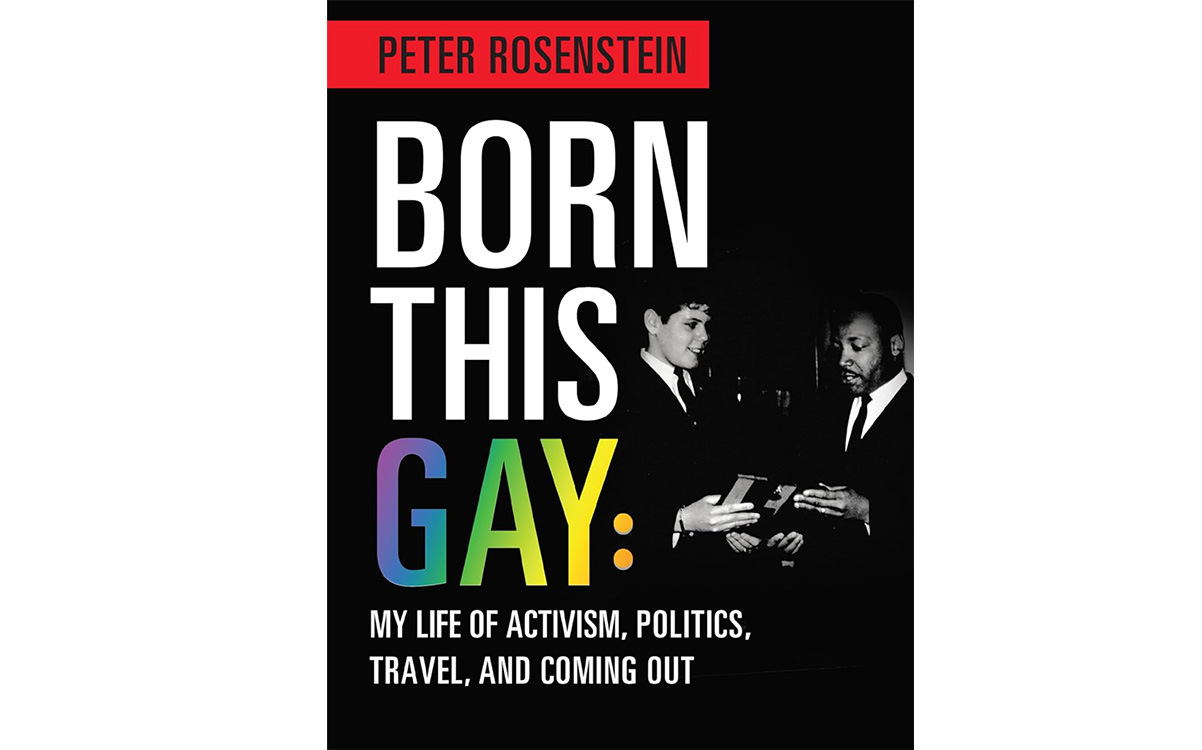
Peter Rosenstein, a longtime D.C. activist and Washington Blade columnist, has published his first book, “Born This Gay: My Life of Activism, Politics, Travel, and Coming Out,” reflecting on a lifetime of fighting for LGBTQ equality and other experiences. He recounts meeting presidents and even a life-changing encounter with Martin Luther King, Jr.
It’s a powerful read from the perspective of a gay elder who overcame persecution, survived the AIDS epidemic, and lived to see a remarkable transformation in how America treats its LGBTQ citizens.
The book is available at Barnes and Noble as well as on Amazon in various formats, including kindle, soft-cover, and hard-cover.

Rosenstein will be interviewed about the book, and his life, by WTOP journalist Jimmy Alexander at Foundry United Methodist Church, 1500 16th St., N.W., on Thursday, June 6 between 6-8 p.m. It is an open event at an affirming church.
Rosenstein answered questions about the book for the Blade; his responses have been slightly edited for length.
WASHINGTON BLADE: Why did you write this book and why now?
PETER ROSENSTEIN: There are a few reasons. As many know, I enjoy writing, and do much with my regular Blade columns, travel blogs, and theater reviews. I had thought about writing a memoir for a number of years, and began to plan some chapters while I was still working full time. As I put down random thoughts, and experiences, it became clear to me if I wrote a memoir it would have to include my coming out story. That made sense as I was fighting for LGBTQ+ rights. I always knew I was fighting for those rights for future generations, and it made sense to me that my story could be something young people could maybe see something in, to help them live better and more honest lives. I grew up without much money, and in the closet, and still made a good life for myself. In recent years, as we faced Trump and his cult, I realized my talking about how much working for civil rights, women’s rights, the rights of the disability community, and finally my own, enhanced my life. Maybe I could inspire others to do the same. As to timing, when I was diagnosed with cancer a few years ago, I realized life wasn’t endless. When with luck, and good healthcare at NIH, I survived, it was time to get serious about writing this book.
BLADE: Who’s your audience for the book?
ROSENSTEIN: My audience is, I hope, a lot of people, but I guess any author would say that. First, it is for my friends, who will actually learn things about me they may not know. Then it is for other first-generation Americans, whose parents are also immigrants, who may see themselves in some of how I lived my life. Then it is for young people, who may find something in my life to help them, as they move forward living theirs. It is for the LGBTQ+ community, to remind them, and teach young people, it wasn’t always the way it is today. And for those young people, who may be trying to figure out who they are, and for their parents, hopefully supporting their children, as they become their true selves.
BLADE: How long did it take to write and what was your process?
ROSENSTEIN: It took me years to do this book. I never kept a journal, so I began the process by setting up the chapters, and then trying to remember the things that happened in the different stages of my life. That wasn’t all that easy; trying to remember accurately what happened 60 years ago, when sometimes you can’t remember what you had for breakfast yesterday. There were times I thought I remembered something, and then looked up a date, or place, and realized I remembered it wrong. I apologize if there are things in the book others remember differently. This is my life, as I remember it. It is why I don’t use a lot of names in the book. Those who find stories about them in the book, will know who they are.
The actual writing took about three years. I never set a time aside each day to write. I interspersed writing of the book with my other writing. I actually got a lot done on the cruises I love to take. There I wouldn’t be distracted. Actually, I would get up early each morning, open the balcony door, have coffee, juice, and a bagel, delivered to my cabin, and then write for a few hours.
BLADE: Given all the change you’ve lived through on LGBTQ rights, what surprised you most? And what keeps you up at night?
ROSENSTEIN: There are so many things that have surprised me. I lived in the closet for nearly half my life. I never believed how open we in the LGBTQ+ community could be today. I hid behind a tree at my first gay Pride in 1981 so as not to have my picture taken. Then was honored as a Pride Hero in 2016, riding in a convertible toward the front of the parade. I lived through the AIDS crisis, and lost so many friends but saw our community come together in such wonderful ways. I love seeing so many young men and women coming out early and living their lives to the fullest. I joined the fight to allow gays in the military, and have many friends who benefitted. I remember working for Rep. Bella S. Abzug (D-N.Y.) when she introduced the first Equality Bill in 1974, while I was still deep in the closet, and know it still hasn’t passed today. That gives me pause. I was honored to help lead the fight for marriage equality in D.C., and excited when the Supreme Court made it the law of the land. But it gives me pause when I recognize in 37 states that we can be married on Sunday, and thrown out of our apartments, and fired from our jobs, on Monday. I am thrilled when I see young people being open and out, but then listen to Republican governors and Trump and his MAGA cult threaten our progress. We need only look to the reversal of Roe v. Wade, to know we have to be ever vigilant to protect the rights we have won for the LGBTQ+ community.
BLADE: There are many queer memoirs out there. What’s unique about your story?
ROSENSTEIN: I am not claiming my story is totally unique, but I am proud my story involves not only working for LGBTQ+ rights, but working for civil rights, women’s rights, and the rights of the disability community. I have been given such great opportunities to do these things, living in exciting times. From meeting and talking to Martin Luther King Jr., as a 16-year-old high school senior, to teaching elementary school in Harlem, to working for the amazing Bella S. Abzug, and then in the Carter administration.
I had the chance to volunteer for and meet the brilliant Hillary Rodham Clinton, and volunteer for and meet Bill Clinton and Barack Obama, among so many other amazing people. I had the chance to make a difference in D.C. by helping to write the platforms, and elect, a number of D.C. mayors. Then working for 35 years as CEO of healthcare, and education, non-profits. Add to this my travels beginning at age 13 to a Boy Scouts Jamboree in Colorado Springs, driving across country twice, getting body painted and wearing flowers in my hair to hear Janice Joplin and Big Brother and the Holding Company, traveling the world from China to the Galapagos, from Ibiza to Mykonos, to going through the Panama Canal. It has been an amazing life, and it is fun to now share it with others.
Excerpt from the introduction to “Born This Gay” by Peter Rosenstein:
This is my story, that of a first-generation American whose life has often been one surprise after another. I never had a structured life plan, but instead, I’ve lived my life to the fullest in many ways. I could never have imagined at sixteen that I would, in the course of my life, meet six presidents and have a conversation with Dr. Martin Luther King Jr. I consider myself fortunate to have had all the spectacular experiences I’ve had and been given so many opportunities to work to make a positive difference in people’s lives. My story may resonate with other first-generation Americans because we have a shared history in which our parents came to the United States in search of better lives, whether they’d fled turmoil at home or had simply heard the streets of America were paved in gold for all who were willing to work hard. My parents, Dorrit and Heinz, escaped from Hitler and the Holocaust…
It’s my hope that others, especially young people, can find something in the story of my experiences that will help them create opportunities to build their own future. Maybe reading about my work and the challenges I’ve faced can help someone make the most of their own potential. And not only might my journey as a first-generation American help in enlightening the reader, it’s also possible that the story of my journey through life might provide some comfort and direction for those in the LGBTQ+ community in trying to determine whom they were born to be. If it does, then they may be able to come out and live their truth at a much younger age than I was when I did so, leading them to live fuller and happier lives. Since my youth, significant progress has been achieved in fostering acceptance of the LGBTQ+ community. I am proud to have helped drive some of the advancements that led to this progress. Hopefully, these advancements—as well as my journey, as I’ve detailed it in this book—will help questioning readers feel comfortable enough to become out and proud…
When I was a boy growing up in a lower-middle-class Jewish home in Washington Heights, a neighborhood in upper Manhattan, New York City, I understood how much my parents suffered just for being Jewish. That knowledge drew me to community activism and then politics. I saw these things as a way to make life better for others and help ensure that what my parents experienced in Europe wouldn’t occur here in the United States. I was convinced it couldn’t—until Donald Trump was elected president. Watching what he and his administration did during his presidency and what he and his cult continue to do today has been a wake-up call. Seeing him condone some of the worst of the far-right agenda makes me wonder if it could all happen here. Seeing eleven people slaughtered in a synagogue in Pittsburgh and a rabbi and his family attacked in their home in New York brought home to me the reality that it could. The rise in antisemitism is frightening. Those events, as well as the slaughter of nine Black people in a church in Charlotte and forty-nine people in a gay nightclub in Orlando, not to mention other atrocities, have only spurred me to work harder to ensure this is not what America will stand for. It’s not an America I want to leave to future generations…
Hopefully, those who read my story will take from it something to help them more readily accept who they are and understand that in each of us there is good. I also hope that readers will come away with the understanding that their wanting to live a great life should not interfere with their meeting the responsibility to better the lives of others; rather, it should compel one to work for the benefit of society in both large and small ways. We can only hope that what people remember about us is the good we did during our short time here on Earth. The brevity of that time allotted to each of us came home to me in the past few years as I faced cancer, which, luckily, I have survived. In this story, I will share some of my amazing experiences while traveling around the United States and the world. I’ll discuss my passion for activism, politics, policy, and people. This passion has allowed me to meet and work with so many who have influenced me and have played roles in how I live my life. You don’t need to be rich to live a rich and full life. Working to make life better for others will consequently make your own life better. So here begins the story of how so many people, along with small and large events, have helped to make me who I am and have allowed me to live a life full of fun, excitement, activism, politics, and policy. Here we go!
The Blade may receive commissions from qualifying purchases made via this post.
a&e features
Your guide to D.C.’s queer New Year’s Eve parties
Ring in 2026 with drag, leather, Champagne, and more
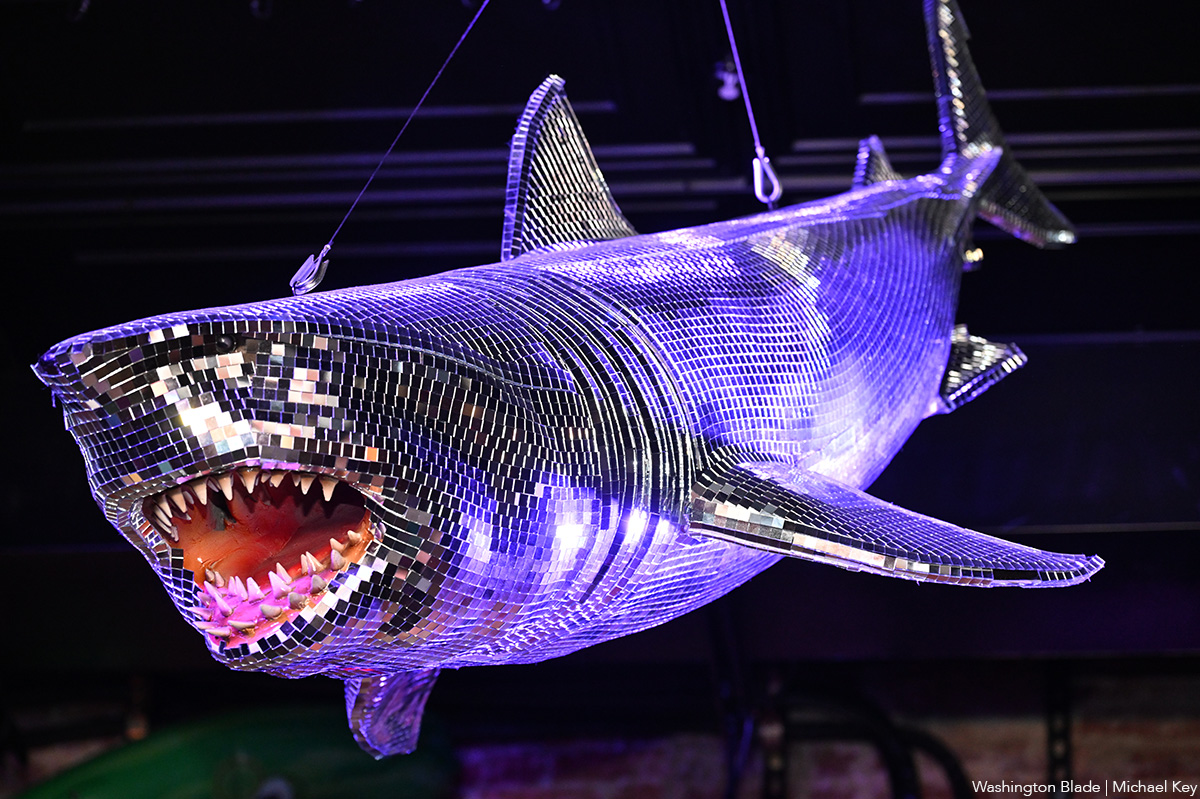
With Christmas in the rear view mirror, we can turn our attention to ringing in a much-anticipated New Year with a slew of local LGBTQ parties. Here’s what’s on tap.
Pitchers
This spacious Adams Morgan bar is hosting the “Pitchers’ Perfect New Year’s Eve.” There will be a midnight Champagne toast, the ball drop on the big screens, and no cover, all night long. The bar doesn’t close until 4 a.m., and the kitchen will be open late (though not until close). All five floors will be open for the party, and party favors are promised.
Trade
D.C.’s hottest bar/club combo is leaning into the Shark motif with its NYE party, “Feeding Frenzy.” The party is a “glitterati-infused Naughty-cal New Year’s Even in the Shark Tank, where the boats are churning and the sharks are circling.” Trade also boasts no cover charge, with doors opening at 5 p.m. and the aforementioned Shark Tank opening at 9 p.m.. Four DJs will be spread across the two spaces; midnight hostess is played by Vagenesis and the two sea sirens sensuously calling are Anathema and Justin Williams.
Number Nine
While Trade will have two DJs as part of one party, Number Nine will host two separate parties, one on each floor. The first floor is classic Number Nine, a more casual-style event with the countdown on TVs and a Champagne midnight toast. There will be no cover and doors open at 5 p.m. Upstairs will be hosted by Capital Sapphics for its second annual NYE gathering. Tickets (about $50) include a midnight Champagne toast, curated drink menu, sapphic DJ set by Rijak, and tarot readings by Yooji.
Crush
Crush will kick off NYE with a free drag bingo at 8 p.m. for the early birds. Post-bingo, there will be a cover for the rest of the evening, featuring two DJs. The cover ($20 limited pre-sale that includes line skip until 11 p.m.; $25 at the door after 9 p.m.) includes one free N/A or Crush, a Champagne toast, and party favors (“the legal kind”). More details on Eventbrite.
Bunker
This subterranean lair is hosting a NYE party entitled “Frosted & Fur: Aspen After Dark New Year’s Eve Celebration.” Arriety from Rupaul Season 15 is set to host, with International DJ Alex Lo. Doors open at 9 p.m. and close at 3 p.m.; there is a midnight Champagne toast. Cover is $25, plus an optional $99 all-you-can-drink package.
District Eagle
This leather-focused bar is hosting “Bulge” for its NYE party. Each District Eagle floor will have its own music and vibe. Doors run from 7 p.m.-3 a.m. and cover is $15. There will be a Champagne toast at midnight, as well as drink specials during the event.
Kiki, Shakiki
Kiki and its new sister bar program Shakiki (in the old Shakers space) will have the same type of party on New Year’s Eve. Both bars open their doors at 5 p.m. and stay open until closing time. Both will offer a Champagne toast at midnight. At Kiki, DJ Vodkatrina will play; at Shakiki, it’ll be DJ Alex Love. Kiki keeps the party going on New Year’s Day, opening at 2 p.m., to celebrate Kiki’s fourth anniversary. There will be a drag show at 6 p.m. and an early 2000s dance party 4-8 p.m.
Spark
This bar and its new menu of alcoholic and twin N/A drinks will host a NYE party with music by DJ Emerald Fox. Given this menu, there will be a complimentary toast at midnight, guests can choose either sparkling wine with or without alcohol. No cover, but Spark is also offering optional wristbands at the door for $35 open bar 11 p.m.-1 a.m. (mid-shelf liquor & all NA drinks).
a&e features
Local, last-minute holiday gift ideas
Celebrate the season while supporting area businesses
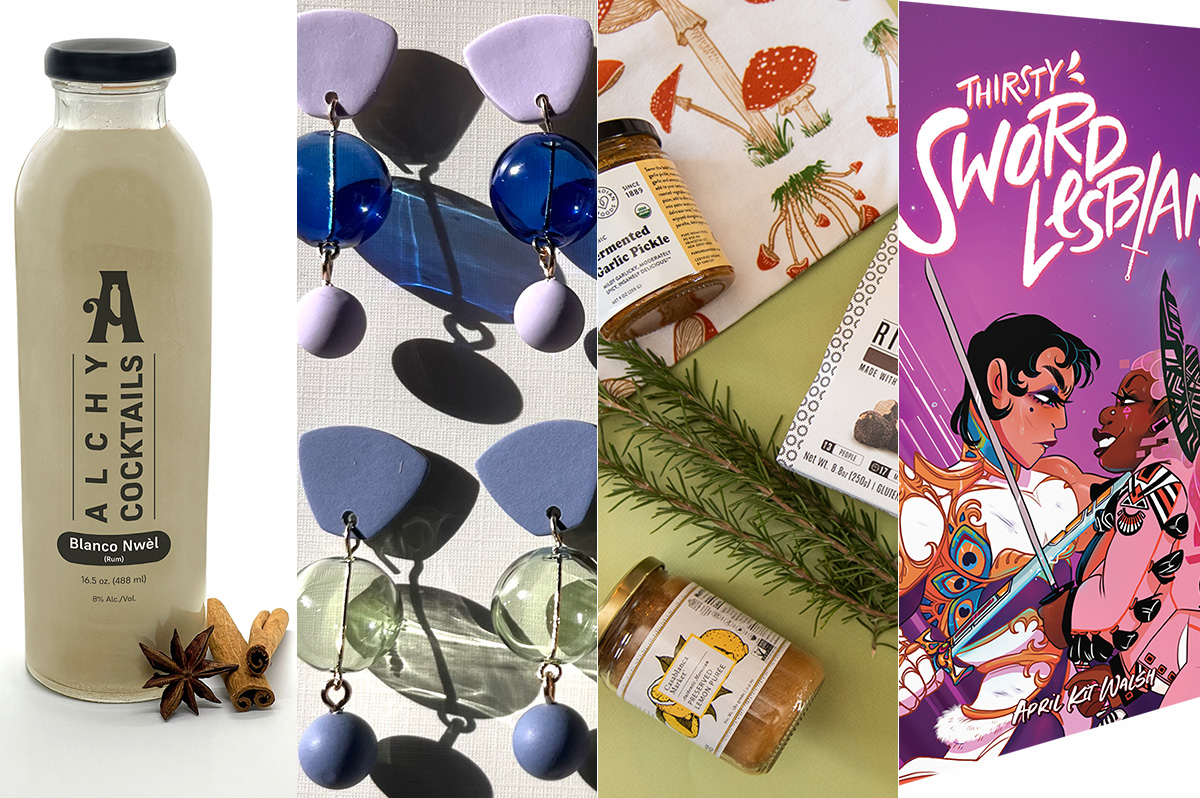
The DowntownDC Holiday Market is bustling. Union Station is decked out with its annual Christmas tree. Washingtonians have wrapped their houses and apartment balconies with festive lights and holiday decorations. The holiday season is here. And with stockings to fill and empty space under the tree, Washington’s local shops and artists have plenty to offer.
Show your LGBTQ and D.C. pride with the Washington Blade’s annual holiday gift guide.
To embrace the holiday buzz: The Blanco Nwèl cocktail from Alchy Cocktails. This Caribbean eggnog is one of Alchy Cocktail’s seasonal holiday cocktails. The flavor profile is similar to coquito, a traditional Puerto Rican Christmas drink with a coconut base. As a queer and Caribbean-owned business, Alchy Cocktails has been based out of Washington since 2021. Blanco Nwèl is available in both cocktail ($24) and mocktail ($12) online and at a variety of holiday markets, including the Tingey Plaza Holiday Market, the Flea Market at Eastern Market, Union Station’s Main Hall Holiday Market, and more. ($24)
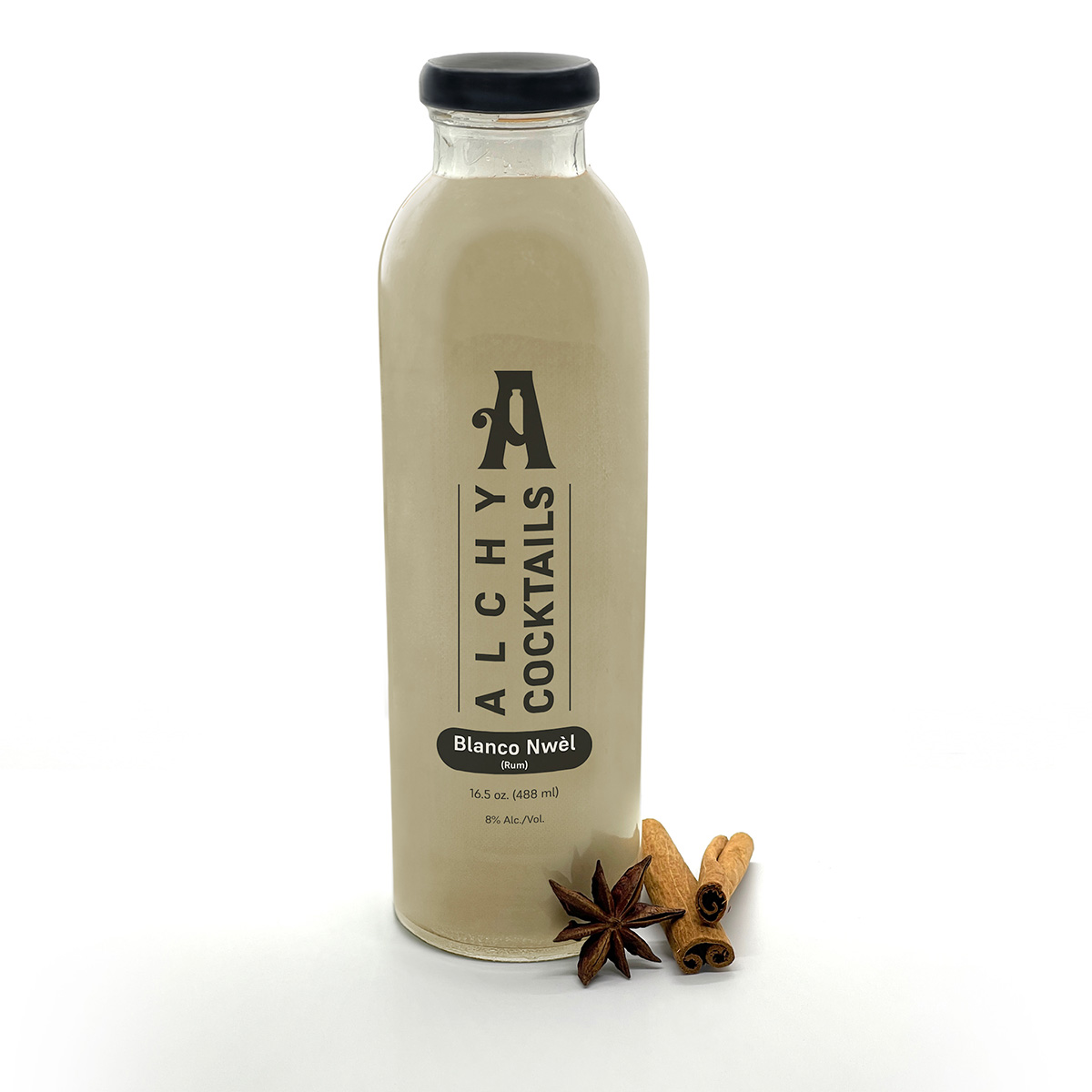
A spicy bite: Gordy’s Cajun Okra from Salt and Sundry. These spicy, tangy pickles pull on Southern Cajun-style flavors, packing a punch with paprika, cayenne, and more. Gordy’s is an LGBTQ-owned and Washington-based brand, making this gift an opportunity to support a local LGBTQ business straight from the jar. This pantry staple is available on Salt & Sundry’s website and at its locations in Union Market, Logan Circle, and its Georgetown holiday pop-up store. ($14)
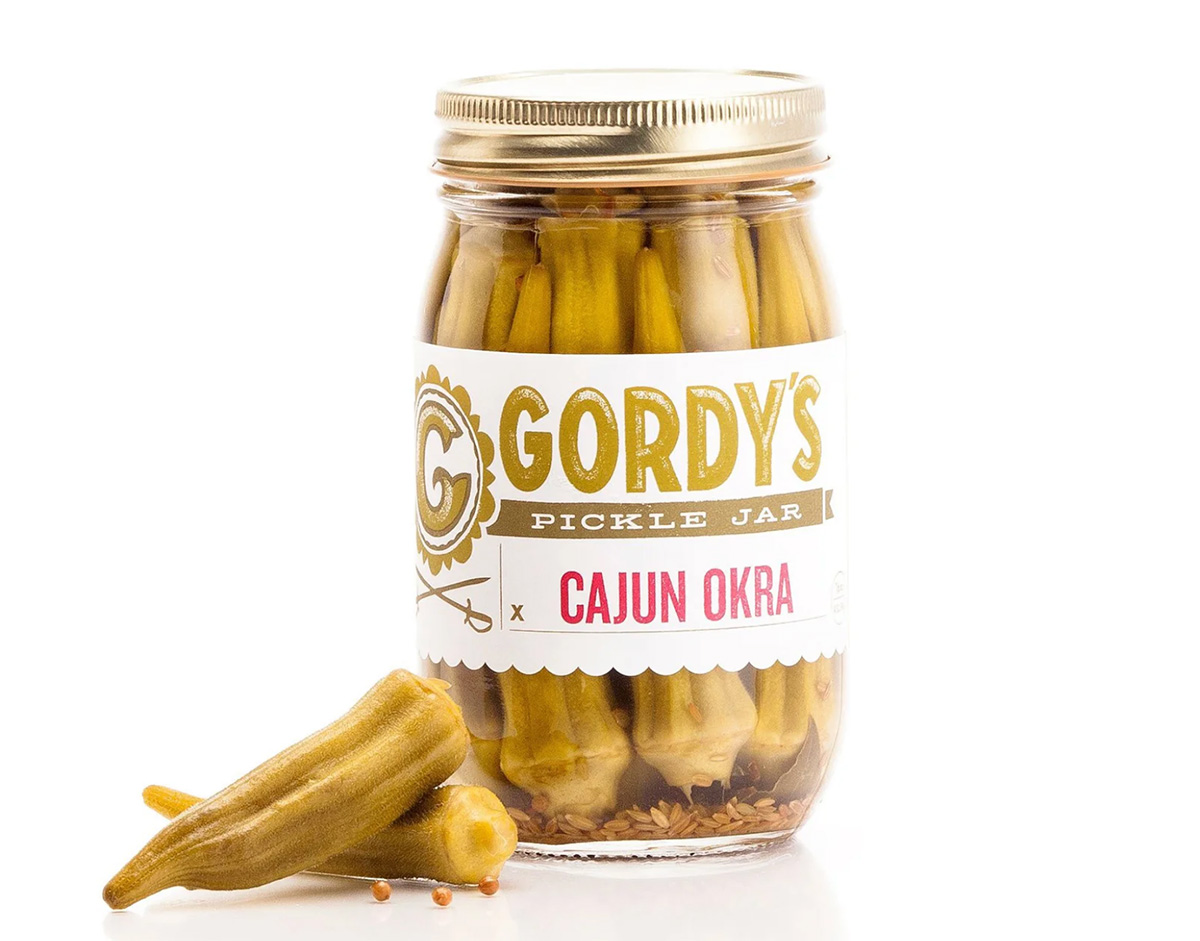

To celebrate Washington pride: The DC Landmark Tote Bag from The Neighborgoods. Native Washingtonians, visitors, friends and family alike will find something to love about this Washington-themed tote bag. Food trucks, the 9:30 Club, the Metro logo and pandas from the National Zoo are just some of the city’s landmarks depicted across the tote in a red, white, and blue color palette. The tote is a part of the DC Landmarks collection, which donates 10 percent of its sales to the American Civil Liberties Union. The Neighborgoods itself is a local, woman-owned business built out of a passion for screen-printing in 2013. The 100 percent cotton canvas tote is for sale online or at the DowntownDC Holiday Market. ($22)
To give friends and family their flowers: The Flowers Bandana from All Very Goods. This 100 percent cotton bandana was designed in Washington and hand printed in India. Its uniqueness comes in being covered with the faces of Black women, representing a “love letter to all women but especially Black women,” according to All Very Goods. The Black woman-owned and operated business, based out of Northwest Washington, has a mission to celebrate diversity and representation through its products. The bandana intends to give Black women their “flowers.” The Flowers bandana is available for purchase online. ($24)

To unlock culinary creativity: The Curious Chef Gift Collection from Each Peach Market. This customizable collection of kitchen oddities — ranging from tinned fish to chili oil — is a quirky gift for the most inventive chefs. The collection is available in a Standard Santa, Extra Goodies and Super Holiday Size for up to $165. The Washington-based market, founded in 2013, permits customers to make the collection special by specifying what unique ingredients are packaged, including products made by local or LGBTQ brands. Each Peach Market offers assembly and pick up in-person at its Mount Pleasant shop and also offers local delivery and nationwide shipping via its website. ($85)
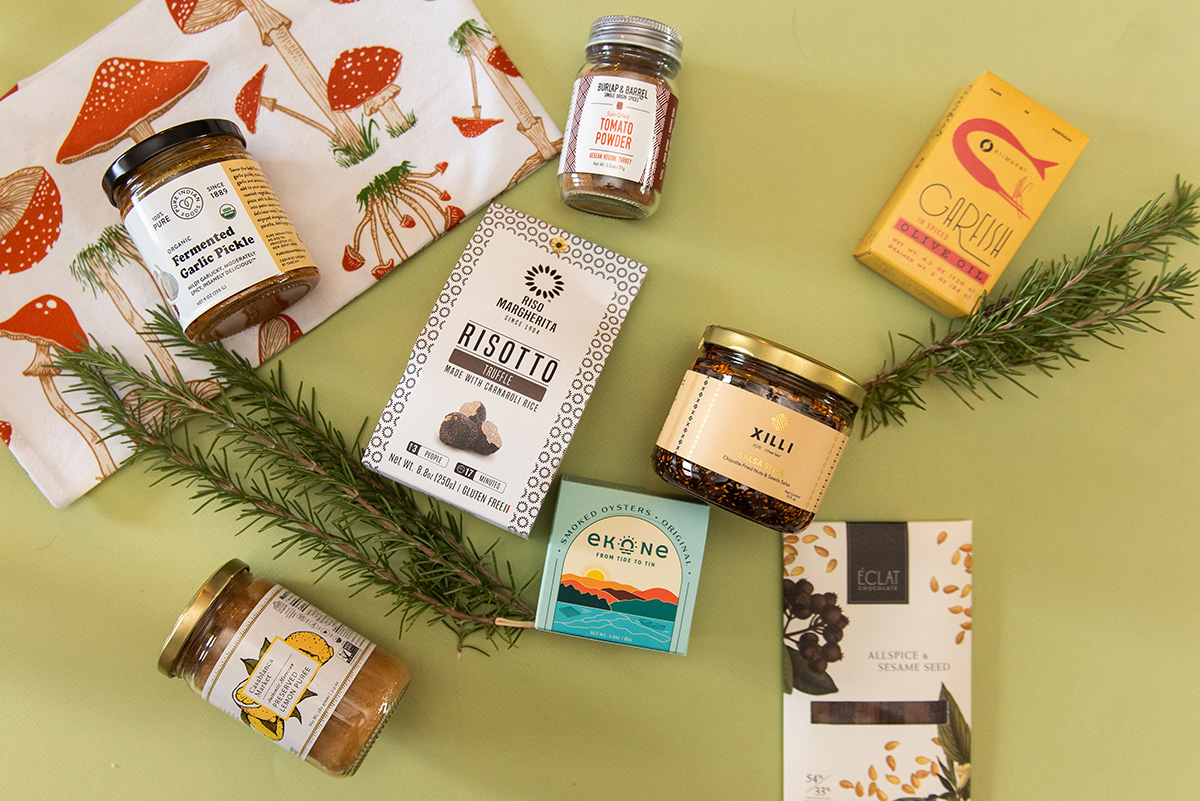
To give a touch of sweetness: The DC Landmark Chocolate Covered Oreo Holiday Cookies from Capital Candy Jar. Wrapped in a festive red bow, this box of nine cookies embraces love for Washington and the holiday season in one. Among the dark and milk chocolate covered cookies are images of the U.S. Capitol, the White House, the Lincoln Memorial, the Jefferson Memorial and festive hollies. The treat, packaged in a Hill East facility just a few blocks from the Capitol, is available for purchase online and at the DowntownDC Holiday Market. ($23.95)
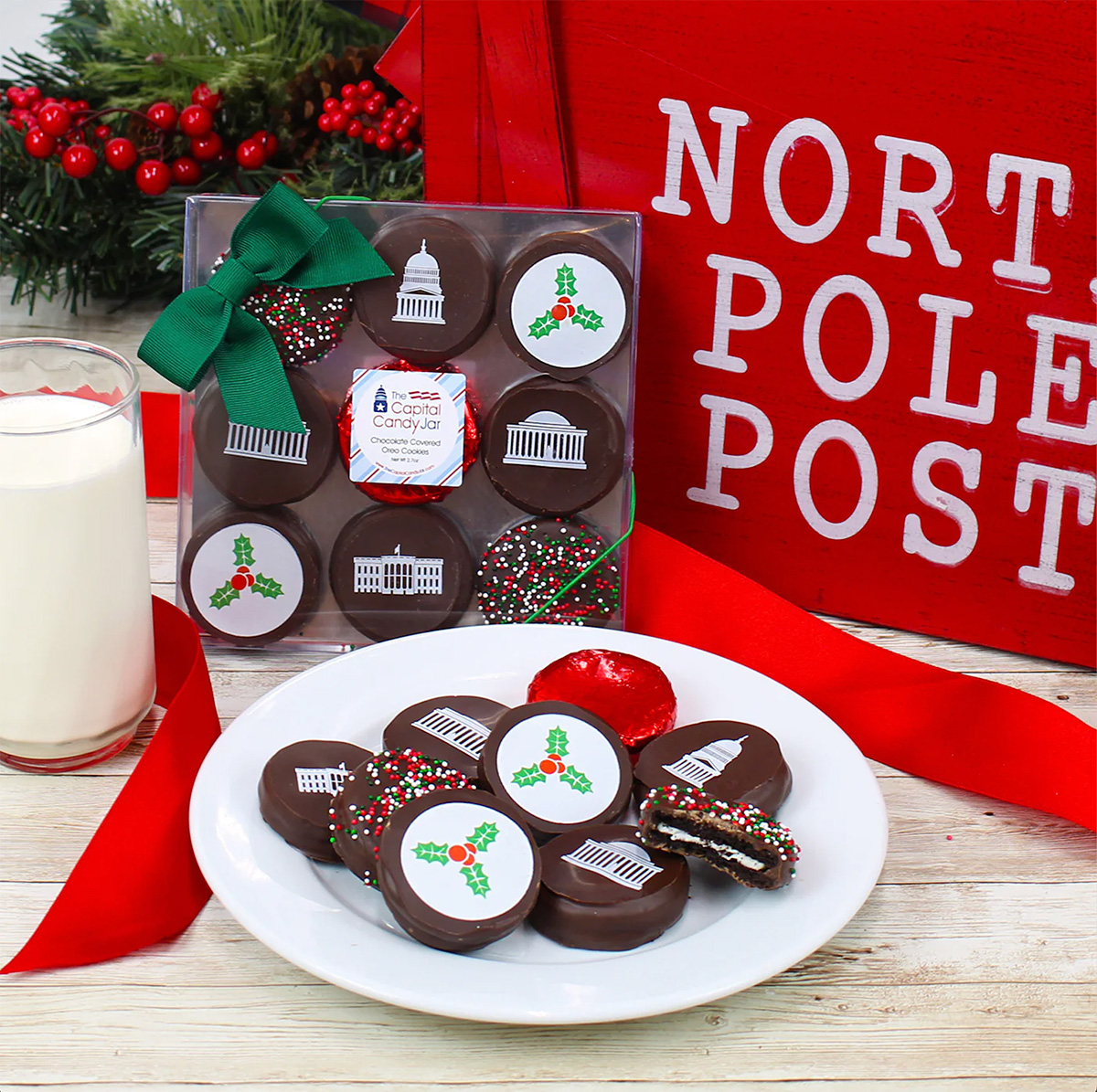

To celebrate queer gaming: Thirsty Sword Lesbians from Labyrinth Games & Puzzles. This roleplaying game embraces lesbian culture by unlocking a world of swords, romance, and battle. Ideal for group settings, the book presents a system of world building and character identities that are best brought to life by creative minds. Labyrinth, which has been a local Washington business for more than 15 years, celebrates non-digital fun through games and puzzles that connect the community. This gift is offered online and at Labyrinth’s Capitol Hill location. ($29.99)
To make a bold statement: The “Resist” T-shirt from Propper Topper. This locally screen-printed black tee features the Washington flag designed within a raised fist, symbolizing both Washington pride, and political resistance. The shirt is made exclusively by Propper Topper, a local Washington business that evolved from a hat shop to a gift store since opening in 1990. The tri-blend unisex shirt is available both for pickup at Propper Topper’s Cathedral Heights location and shipping via the online site. ($32)
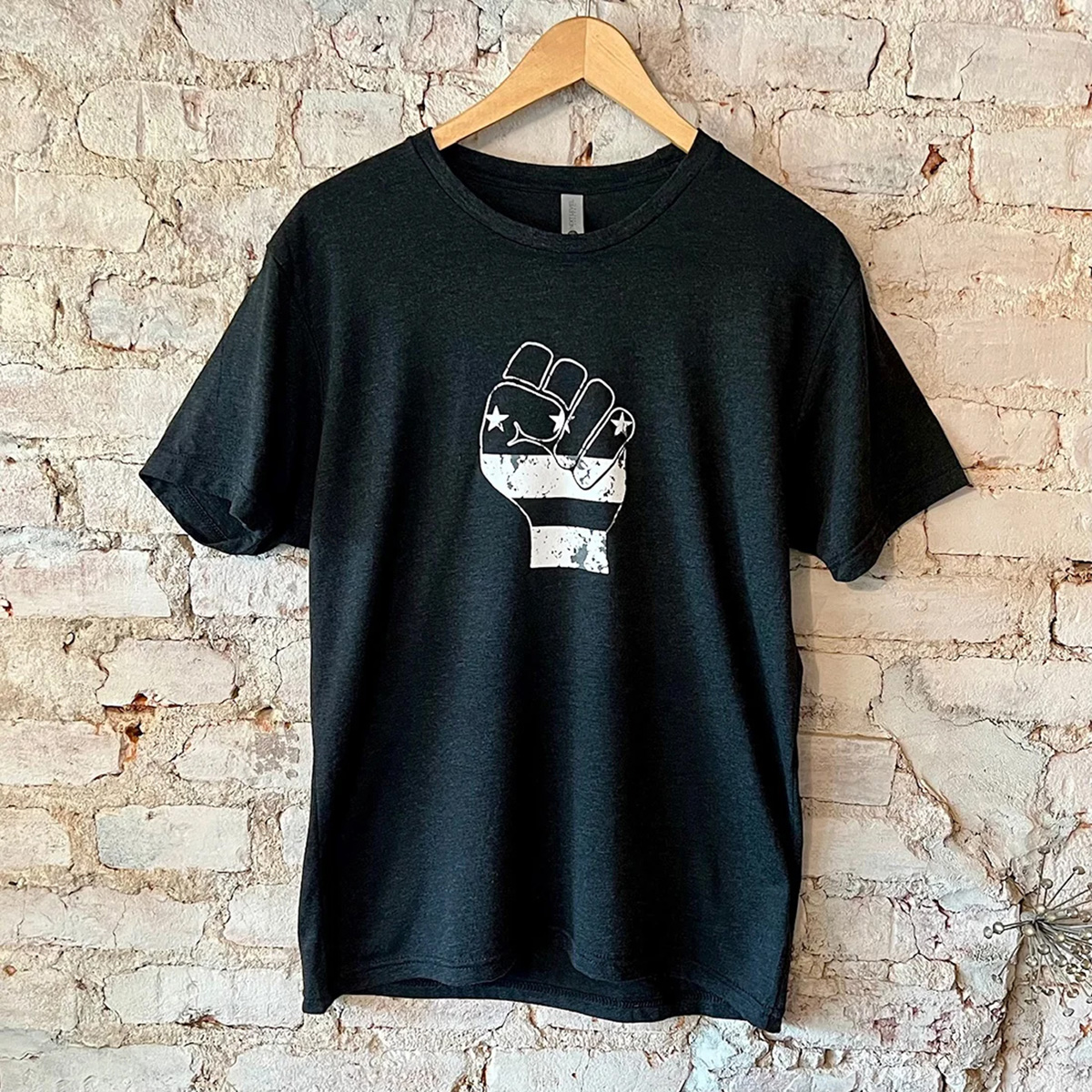
To keep it c(g)lassy: The Glass Ball earrings from Blue Moon Aquarius. Gifting can rarely go wrong when it comes to a new pair of earrings. The unique statement earrings — made of polymer clay, glass, and 18k gold plating over surgical steel — are hand cut, sanded and assembled in Washington, meaning each set is unique. Blue Moon Aquarius, a local brand, is known for its small batch jewelry and home decor designed with clay materials. Available in oxblood, hunter green, lavender, and bluestone color palettes, these earrings are available for purchase on Blue Moon Aquarius’ website and at the DowntownDC Holiday Market. ($48)
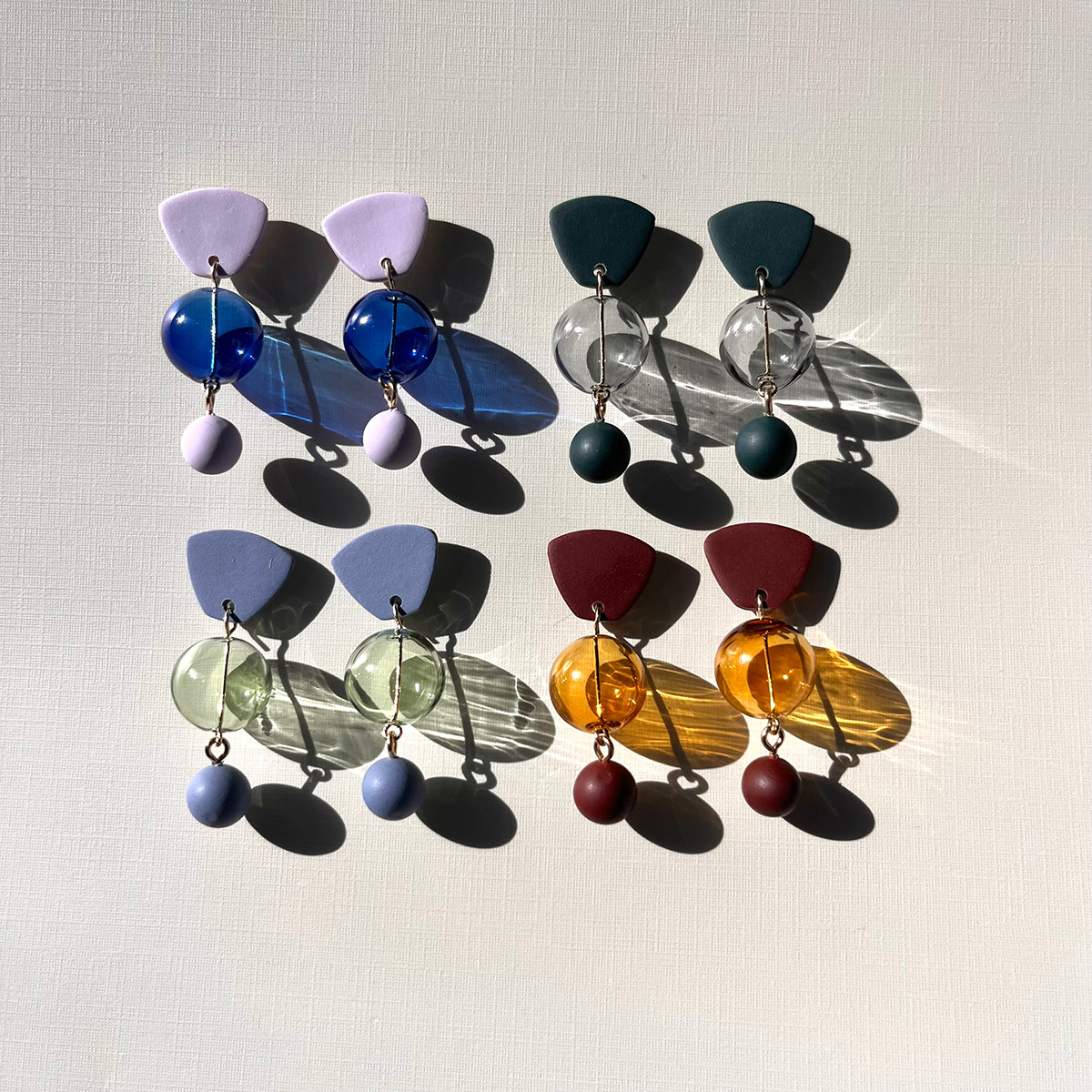
To elevate a holiday tea or charcuterie party: The Honey Flight: Tea Lover’s Selection from BannerBee. This local honey company presents the ideal gift to make cozying up with a cup of tea slightly more special. The Honey Flight contains three types of raw wildflower honey infused with fair trade Ugandan vanilla bean, chai spices, and locally sourced lemon thyme herb. The gift is also an opportunity to uplift a family company based in the Mid-Atlantic that offers all-natural, sustainable products. The flight is available online, at the DowntownDC Holiday Market or at the Arlington Courthouse and Dupont Farmers’ Markets. ($36)
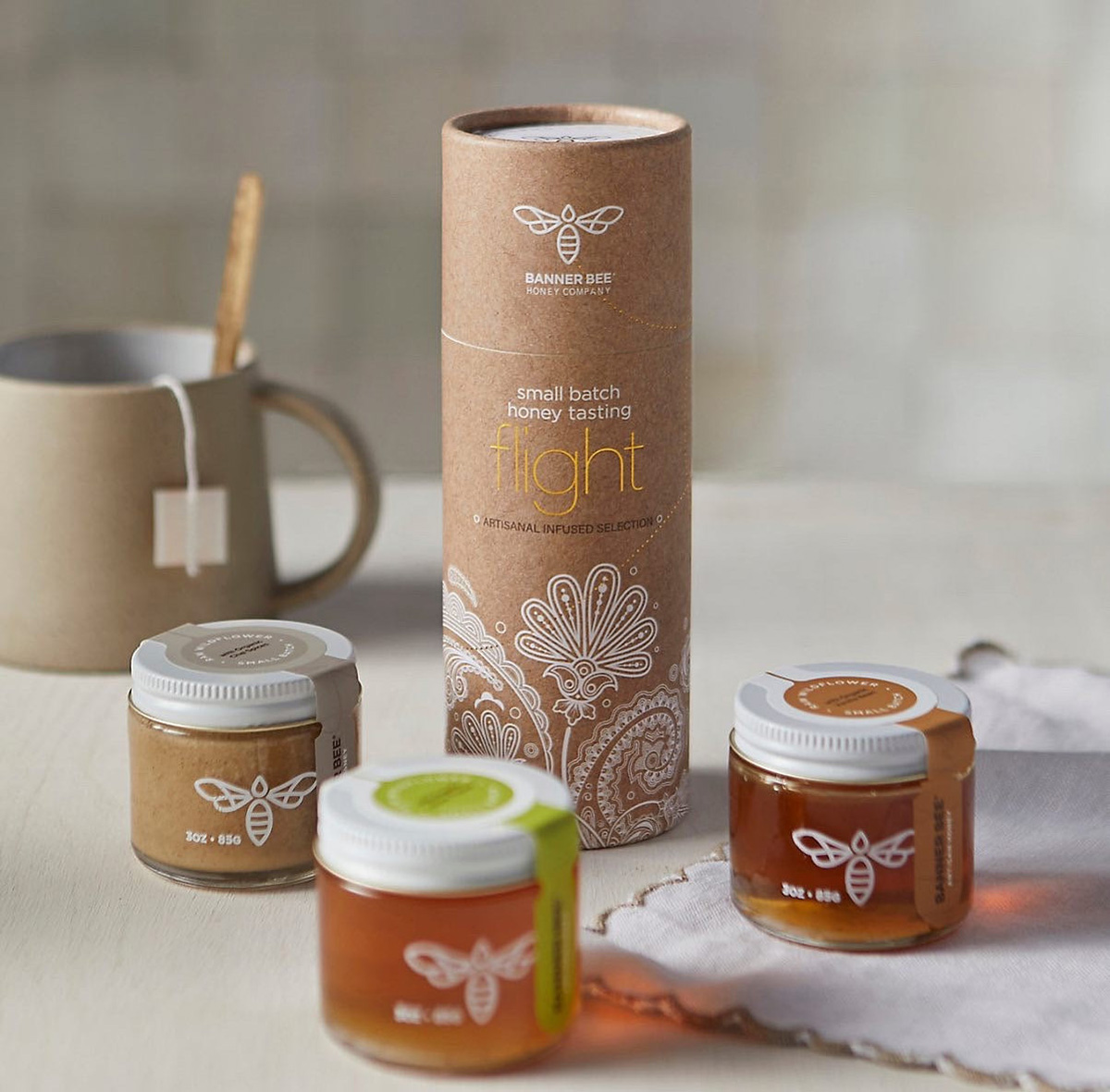
For Baltimore shoppers: If you’re in Charm City, don’t miss Balston Mercantile, opened by a gay couple in June. Their gorgeous shop in the Hampden neighborhood offers an array of unique, upscale finds, from barware and artwork to cookbooks and home decor and more. (849 W. 36th St.)
a&e features
Have yourself a merry John Waters Christmas
Annual holiday show returns to Alexandria and Baltimore
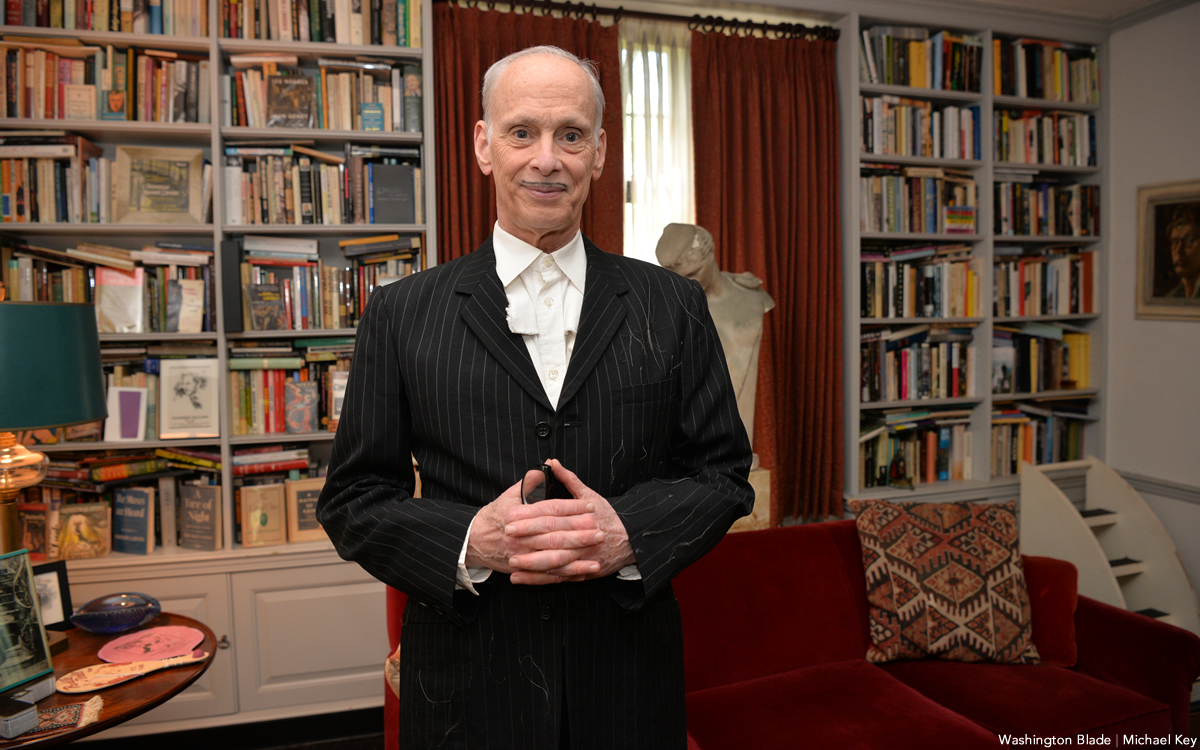
When it comes to iconic Christmas scenes in movies, none can top the tree-toppling tantrum thrown by cha-cha heels-deprived Dawn Davenport in John Waters’s fifth full-length feature “Female Trouble” from 1974. Therefore, it’s not surprising that Waters continues to make art out of Christmas, performing his spoken word Christmas tour in cities across the country. Waters has even more reason to celebrate with the release of his new red vinyl 7” single, a cover of Little Cindy’s “Happy Birthday Jesus (A Child’s Prayer)” on the A-side, and “A Pig Latin Visit From St. Nicholas” on the B-side. If you’re still looking for unique Christmas gifts, consider this record. As always, John was kind enough to make time for an interview in advance of his tour dates.
BLADE: John, in preparation for this interview with you, I went back and listened to Little Cindy’s original rendition of “Happy Birthday Jesus (A Child’s Prayer)” on your “A John Waters Christmas” CD.
JOHN WATERS: One thing I did, if you notice, I make the same stumble in my recording that she did in the original.
BLADE: It sounded to me like she got choked up.
WATERS: No, I think she just stumbles over a word, so I stumbled over the same word. It’s appropriation, insanely.
BLADE: Is this a song you first became aware of in your youth or when you were an adult?
WATERS: When I was doing the Christmas album, I had this friend named Larry Benicewicz. He was kind of my idea man with music. He knew every single old record. I would say to him, “Weird Christmas songs,” when we were doing a soundtrack, or a song about bears, or a song about this, and he would give me all these tapes. It was one of the ones he played for me. A lot of the songs I put in my movies and on my records, I did know as a kid. I did not know this one, but I immediately embraced it. I don’t think it’s campy. I think it really is spiritual in a weird way. My doing it makes it a novelty record. I am really for novelty records, and there aren’t any anymore. Why was there not a COVID novelty record? That’s insane. The dance “The Bug” that’s on the “Hairspray” soundtrack would be perfect for COVID.
BLADE: The thing that struck me was that for a Christmas song in the voice of a child, a kind of death pall hangs over it, with lines like, “If I was good you’d let me live with you” and “they nailed you to the cross, they wanted you to die.”
WATERS: All of it! When I see children at midnight mass kneeling in front of a nude man nailed to a cross, I feel like I’m at The Eagle! It is S&M, it’s creepy. I took the same cover (photo) from her record to parody and put my face on it. The same thing I did with The Singing Dogs last year when I covered (their version of) “Jingle Bells.” I’m really into novelty records. I love them and I’m trying to bring them back. I don’t expect anybody to ever play these records. Even The Singing Dogs one said on it, “Please do not play this record” [laughs]. And the flipside, the Pig Latin version, is almost impossible to listen to.
BLADE: I’m so glad you mentioned that. “A Pig Latin Visit From St. Nicholas” reminded me of the lost art of speaking in Pig Latin. I also recall watching the PBS series “Zoom” as an adolescent and learning to speak “ubbi dubbi,” a distant relative of Pig Latin. Do you think that the time is right for a Pig Latin or ubbi dubbi revival?
WATERS: Here’s the thing, I never could pick up any language, except Pig Latin. I’ve been in every foreign country. Foreign countries have given me money to learn to speak the language. I can never do it! But Pig Latin…my parents and other parents in the ‘50s spoke Pig Latin so kids couldn’t understand what they were saying. Then my mother taught it to me, and I used it. The hardest take to shoot in “Pink Flamingos” was not eating the dog shit. It was when the cast skipped, in one take, saying “E-way, are-yay e-they ilthiest-fay eople-pay in-hay e-they ole-hay ide-way orld-way.” We’re the filthiest people in the whole wide world in Pig Latin. We had to do so many takes so they could do it once without screwing it up. In “Polyester,” Edith (Massey) answers the phone, “ello-hay.” I did a photo piece where it was all subtitled in Pig Latin. Like “osebud-Ray” (from “Citizen Kane”) or in “Streetcar,” “ella-Stay!” [Laughs] All the iconic dialogue translated into Pig Latin. My assistant who helped me do it, had never heard of Pig Latin. She really got good at it because she lived in many foreign countries and can pick up languages. But it’s not that easy to do it correctly and read it. Your computer will translate into Pig Latin.
BLADE: AI understands Pig Latin?
WATERS: I guess that’s AI. It wasn’t 100% right, but it was close. I can speak it if I look at it, but just do a bit at a time. It was a challenge that no one would possibly care about or want to do.
BLADE: I think you pulled it off very well.
WATERS: If you want people to leave on Christmas morning, you put it on. That’s how you get your guests to leave. It’s time to go.
BLADE: Ood-gay i-bay! How did your relationship with record label Sub Pop, which released 2021, 2022, 2024, and new 2025 holiday singles, come about?
WATERS: I believe the first thing I did for them was “Prayer to Pasolini.” They came to me through Ian Brennan. He’s won a couple Grammys for World Music, but he is also is one of my agents who does the Christmas tour and a lot of my shows, anything with music. He helped me arrange each one of the songs. He had a relationship with Sub Pop. It was perfect. My friends in Baltimore, (the band) Beach House, have had huge success.
BLADE: That’s right, they’re on Sub Pop!
WATERS: Yes! I’m happy to be on it. I’ve even been to the warehouse and posed for pictures like Jackie Suzanne used to do.
BLADE: Is there any chance that “A John Waters Christmas” might be reissued on vinyl by Sub Pop?
WATERS: No. It’s such a nightmare to get the rights and to renew them. You have to find the publisher and the writer, and they usually hate each other. It doesn’t matter if it’s obscure or famous, it’s hard to get. You have to make the deal. The singer doesn’t get anything unless they play it on the radio. It would be so complicated legally, and there would be such a [laughs] tiny audience for it. I hope it will come out again. The same thing with the one for Valentine’s Day. I had two of them that did quite well when they came out; “A Date With John Waters and “A John Waters Christmas.” The “John Waters Christmas” album is still the soundtrack that plays whenever I’m doing my spoken word Christmas show as people are entering the theater.
BLADE: Aside from your annual Christmas show tour, what else do you do for the holidays now, and are there any traditions that you’ve carried over from your family?
WATERS: Certainly! I have two sisters, my brother’s widow, and me, so there are four and we take turns each year to have the Christmas dinner. Mine was last year. An entire sit-down dinner. Mom’s China, the silverware, the entire full dinner. It’s pretty traditional. I don’t have a Christmas tree, but I do decorate the electric chair from “Female Trouble.” That is a tradition in my family. We do have Christmas decorations, but they’re usually weird ones that fans sent me. I have one with Divine knocking over the Christmas tree, and the Christmas tree lights up, all sorts of amazing things. There is definitely a tradition here that might be a little altered, but it is definitely a tradition. I used to have a giant party every year, but COVID ended that. I still wouldn’t want 200 people in my house breathing right now.
BLADE: I was looking at your tour schedule and wondered if there are any new cities in which you’ve never performed the John Waters Christmas show that have been added to this year’s schedule?
WATERS: I don’t think there’s a city in America in which I haven’t done one show! The only places I haven’t been to are Hawaii and Alaska. I could do it there, but it’s too long on a tour. I can’t think of a city I haven’t played in in America over the last 50 years. The Christmas show is completely different every year. It doesn’t matter if you saw it last year.














